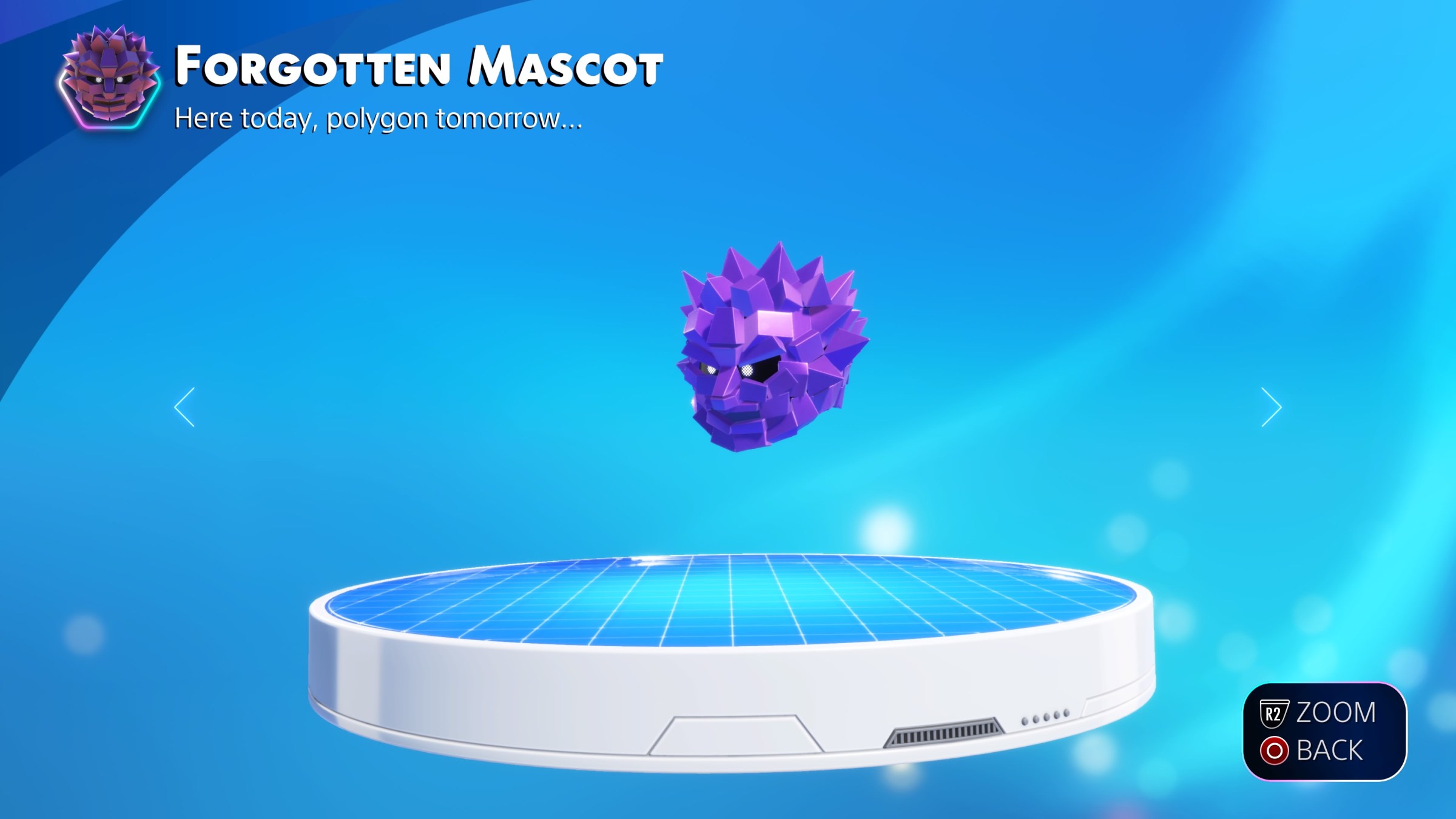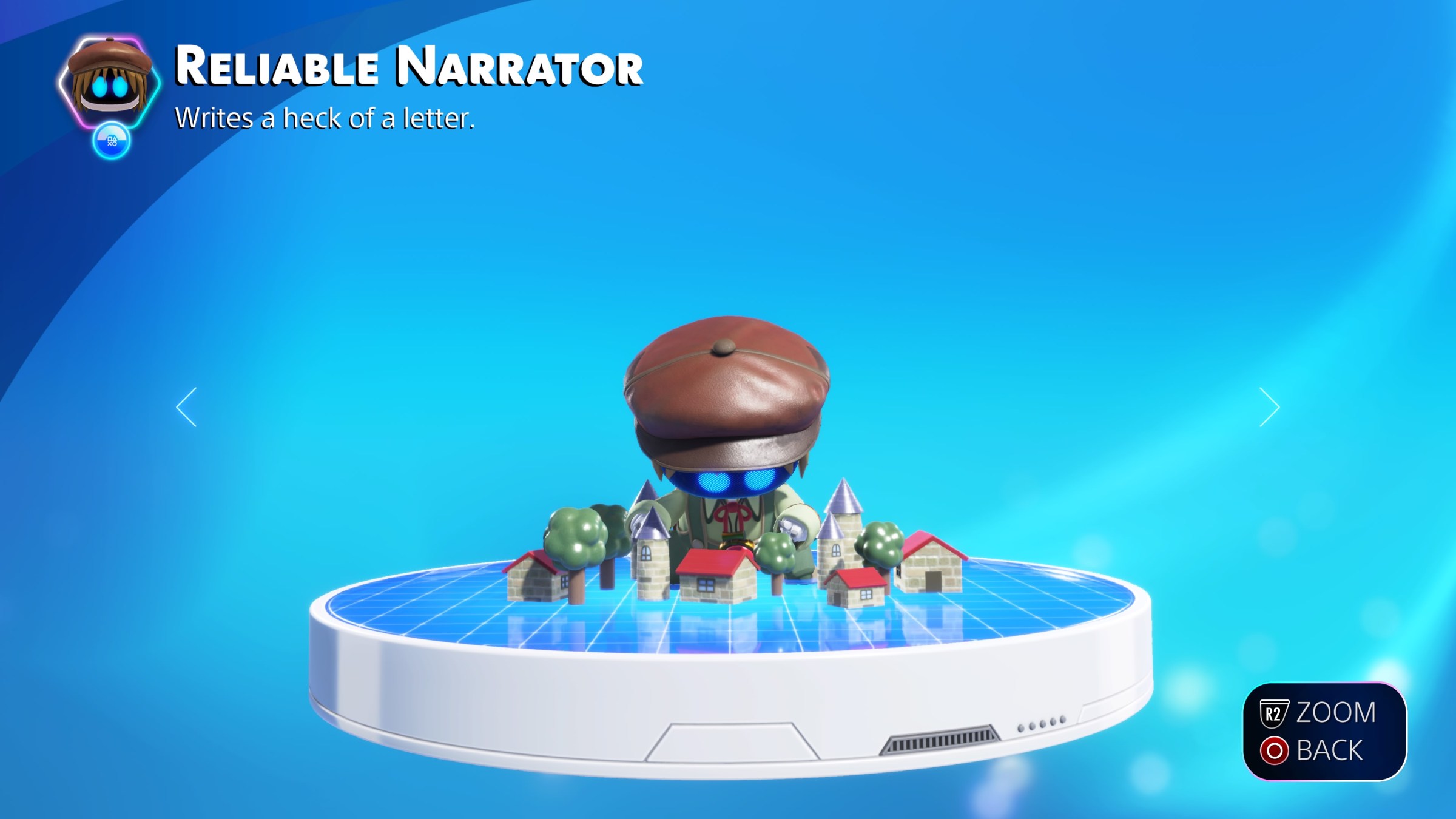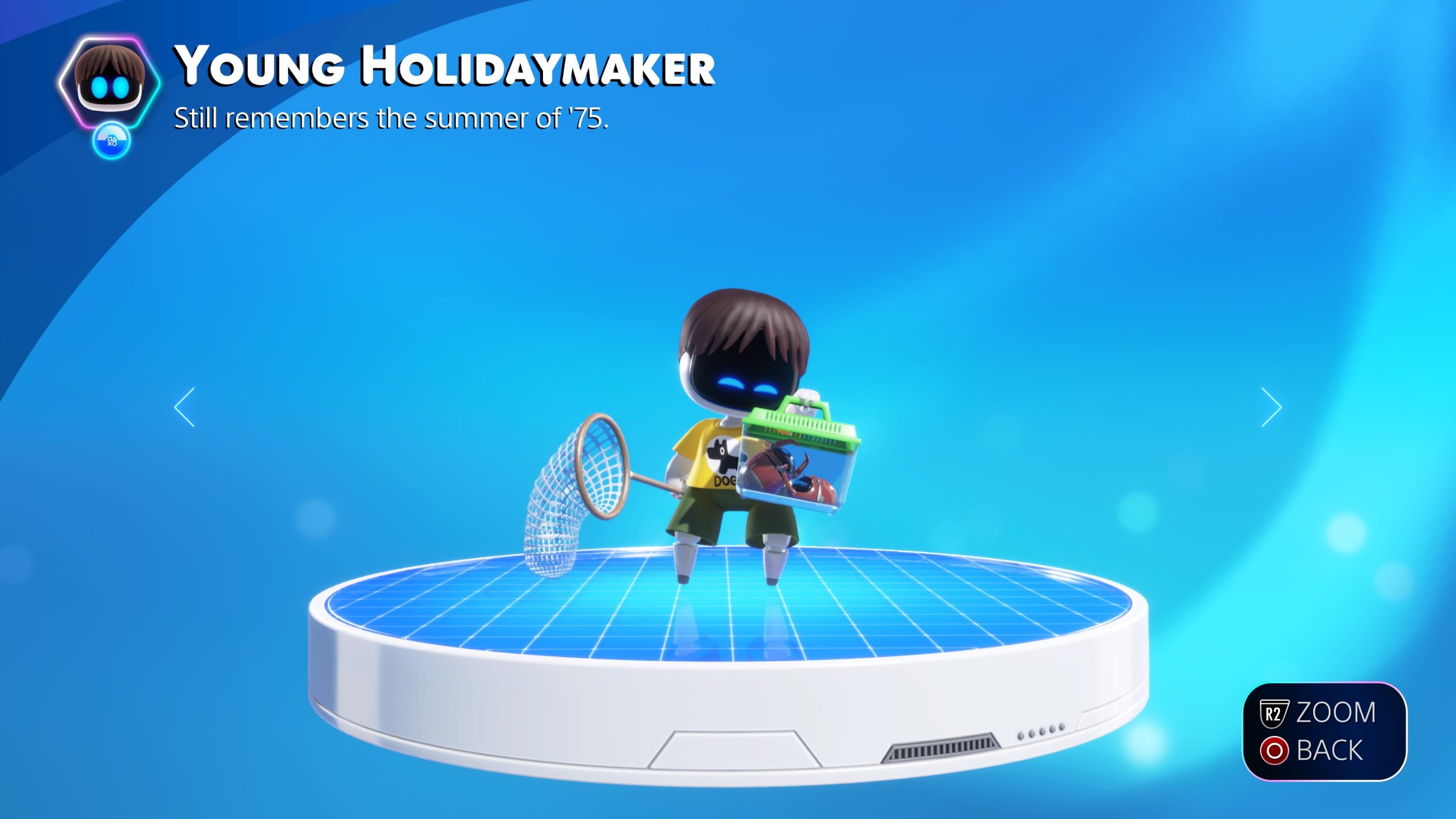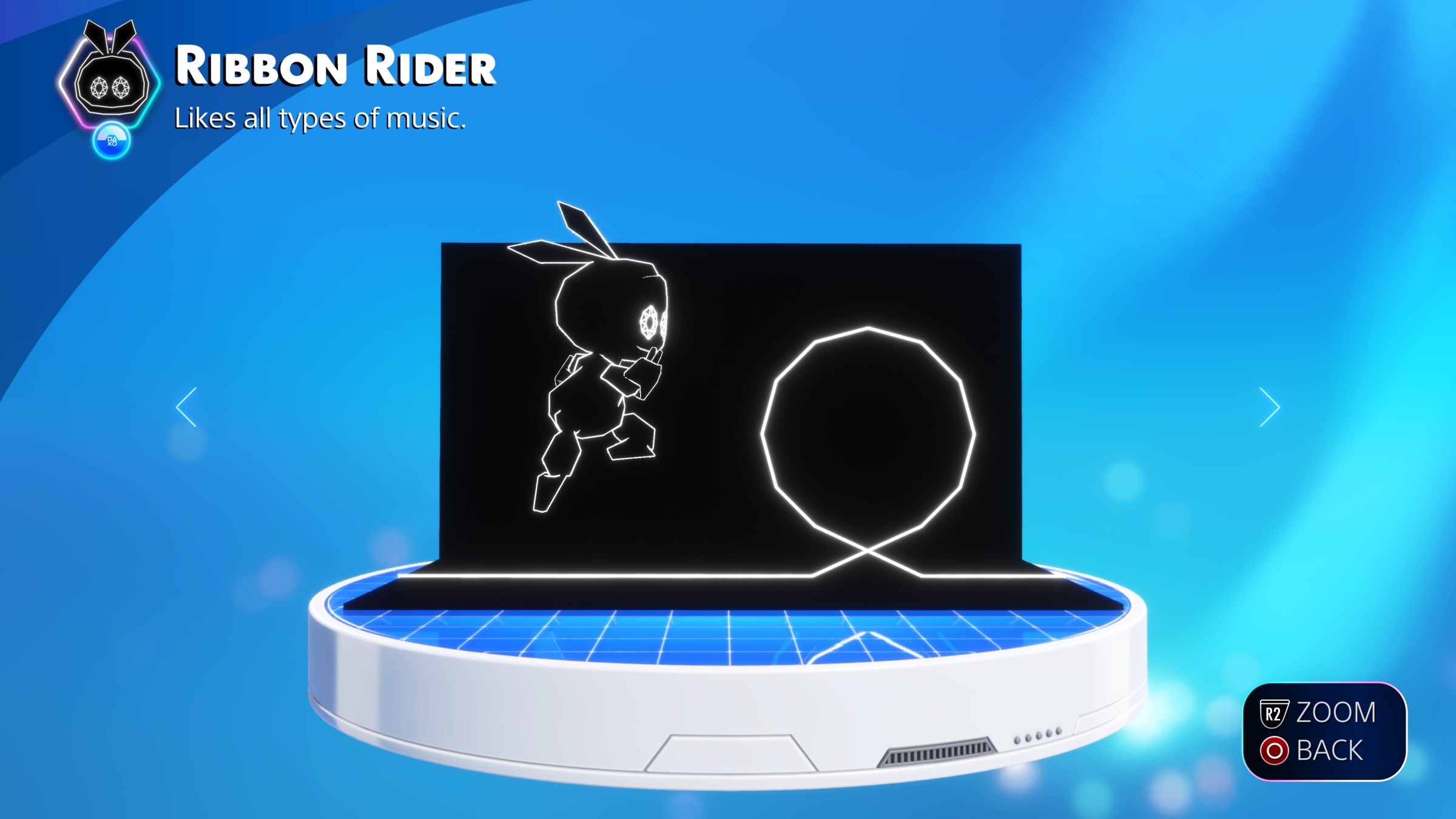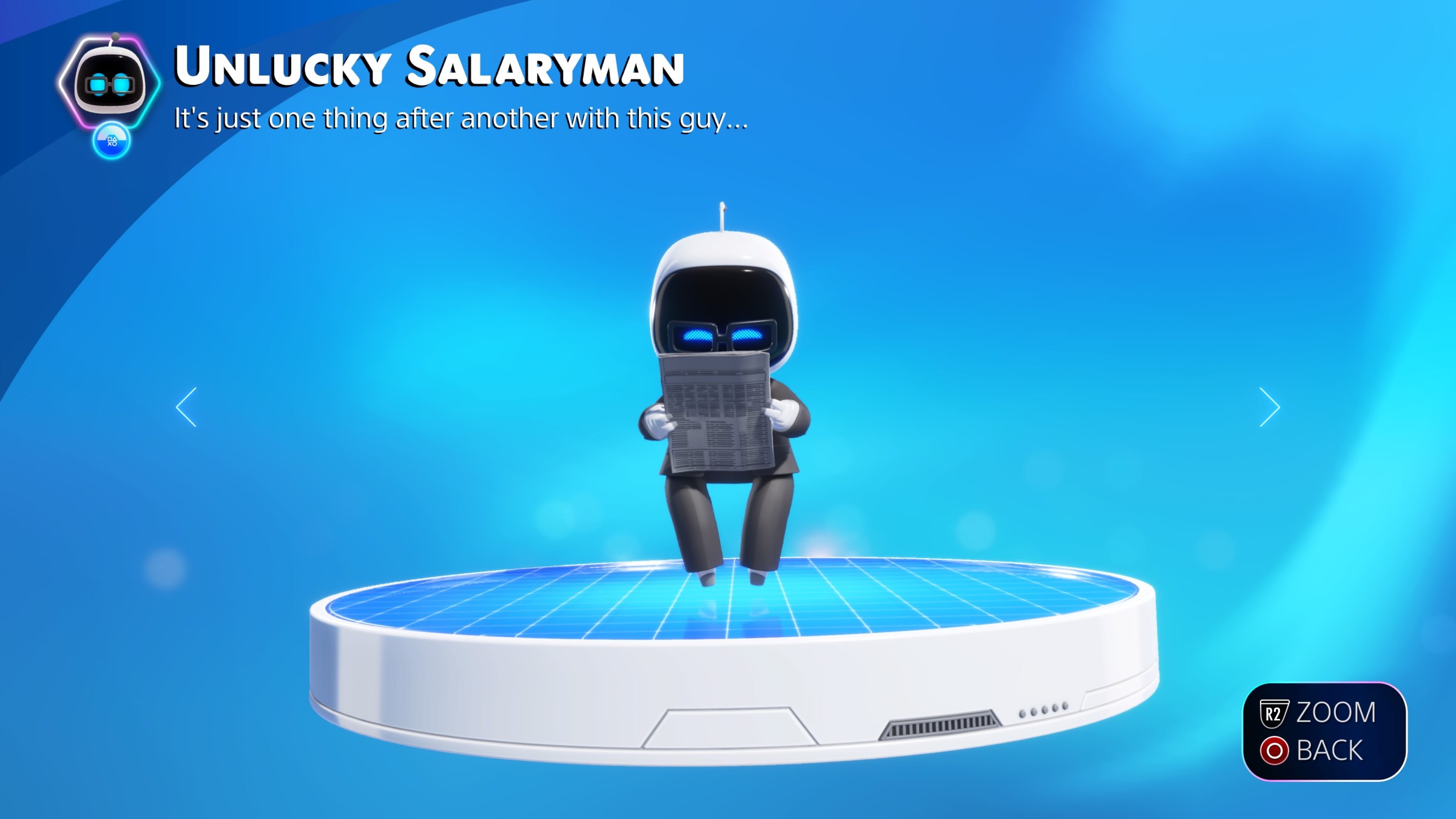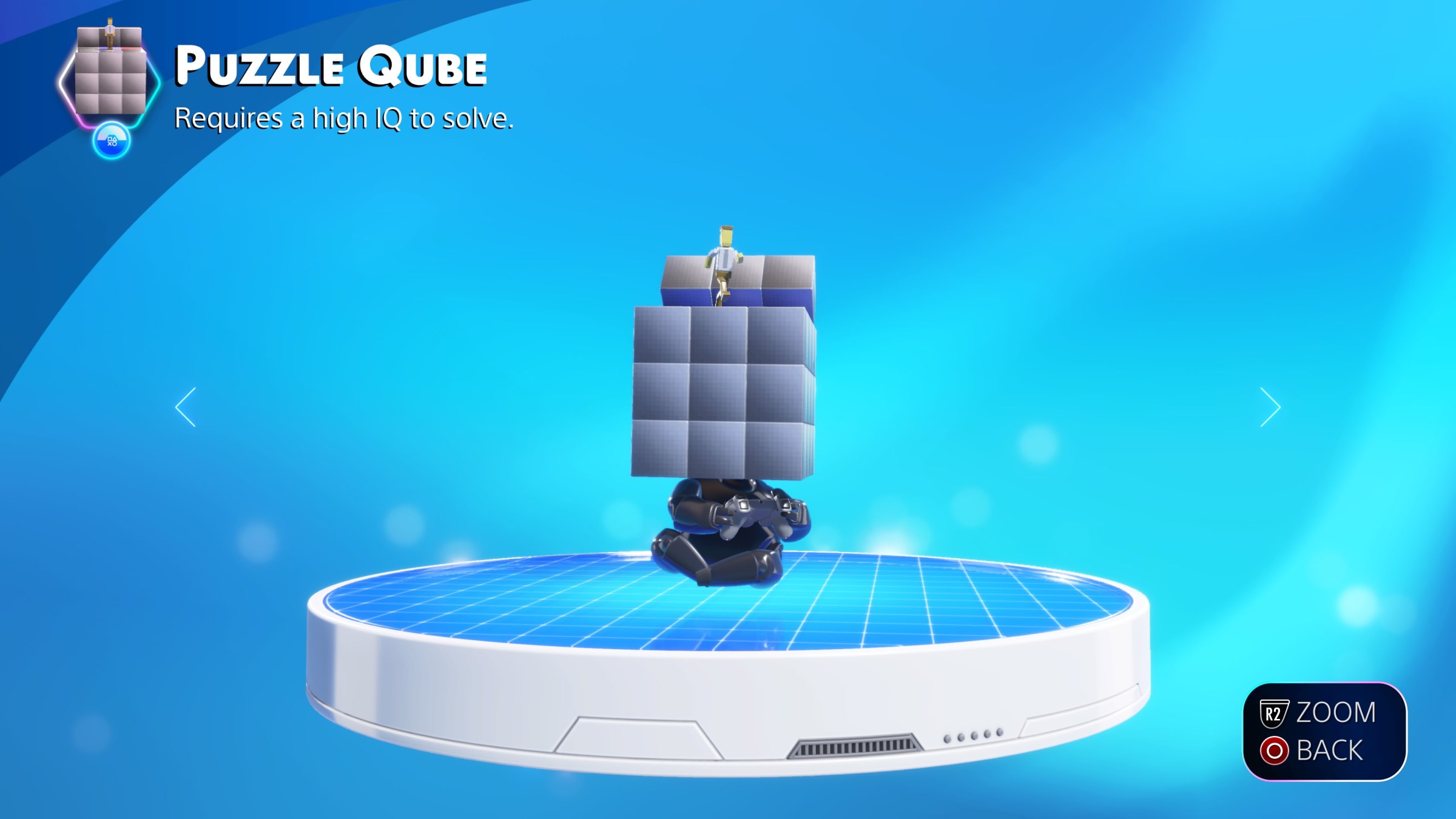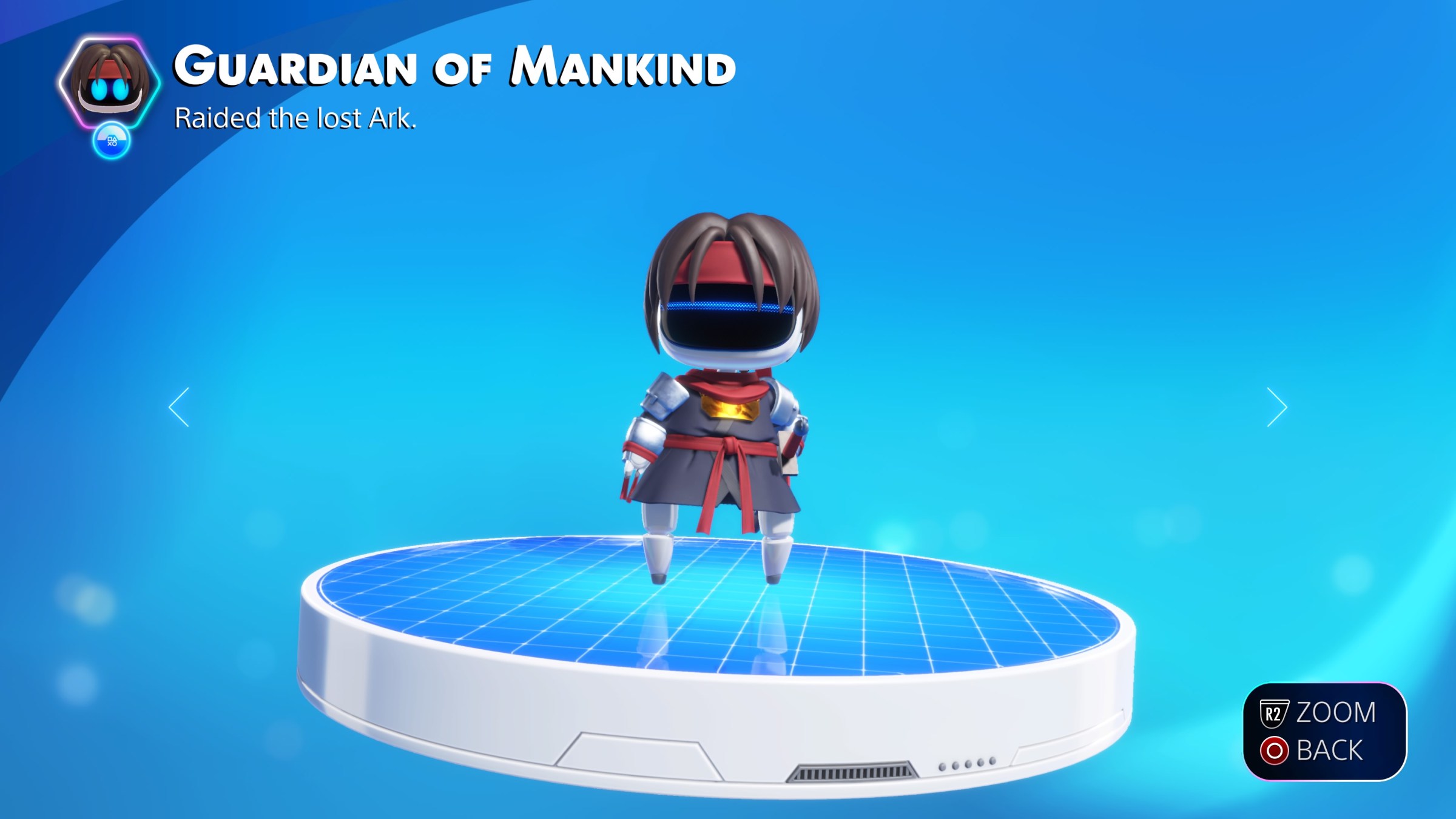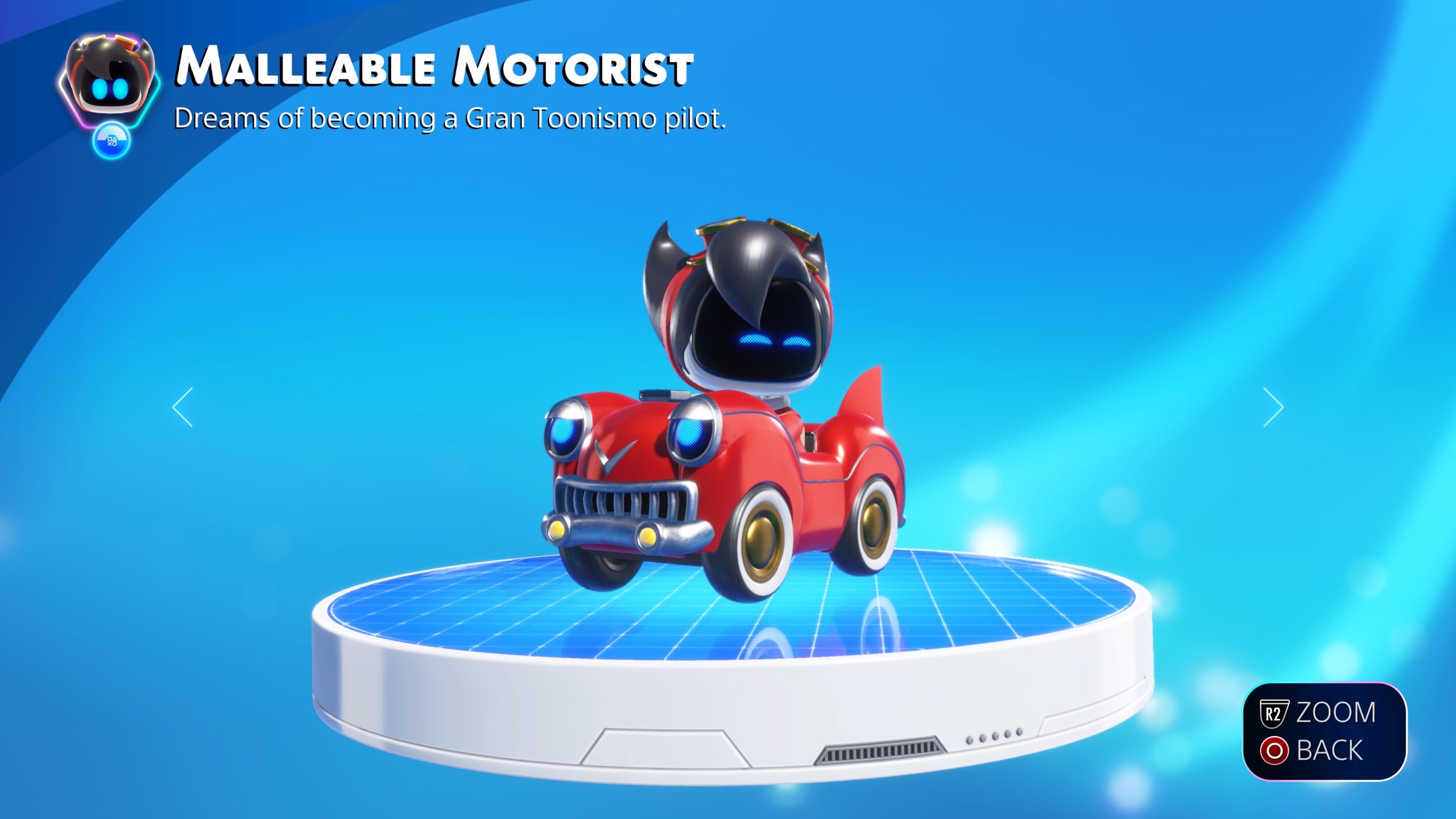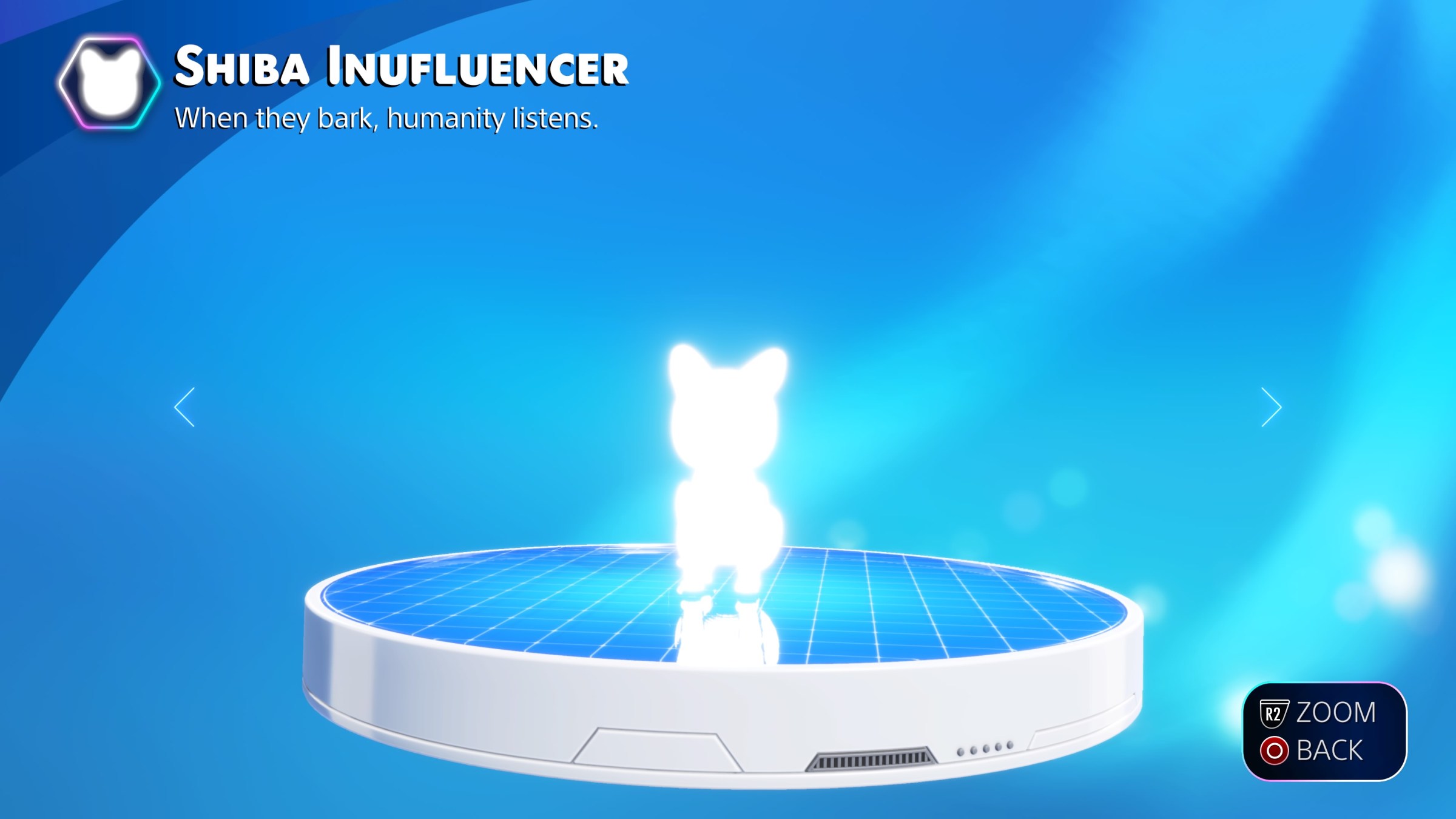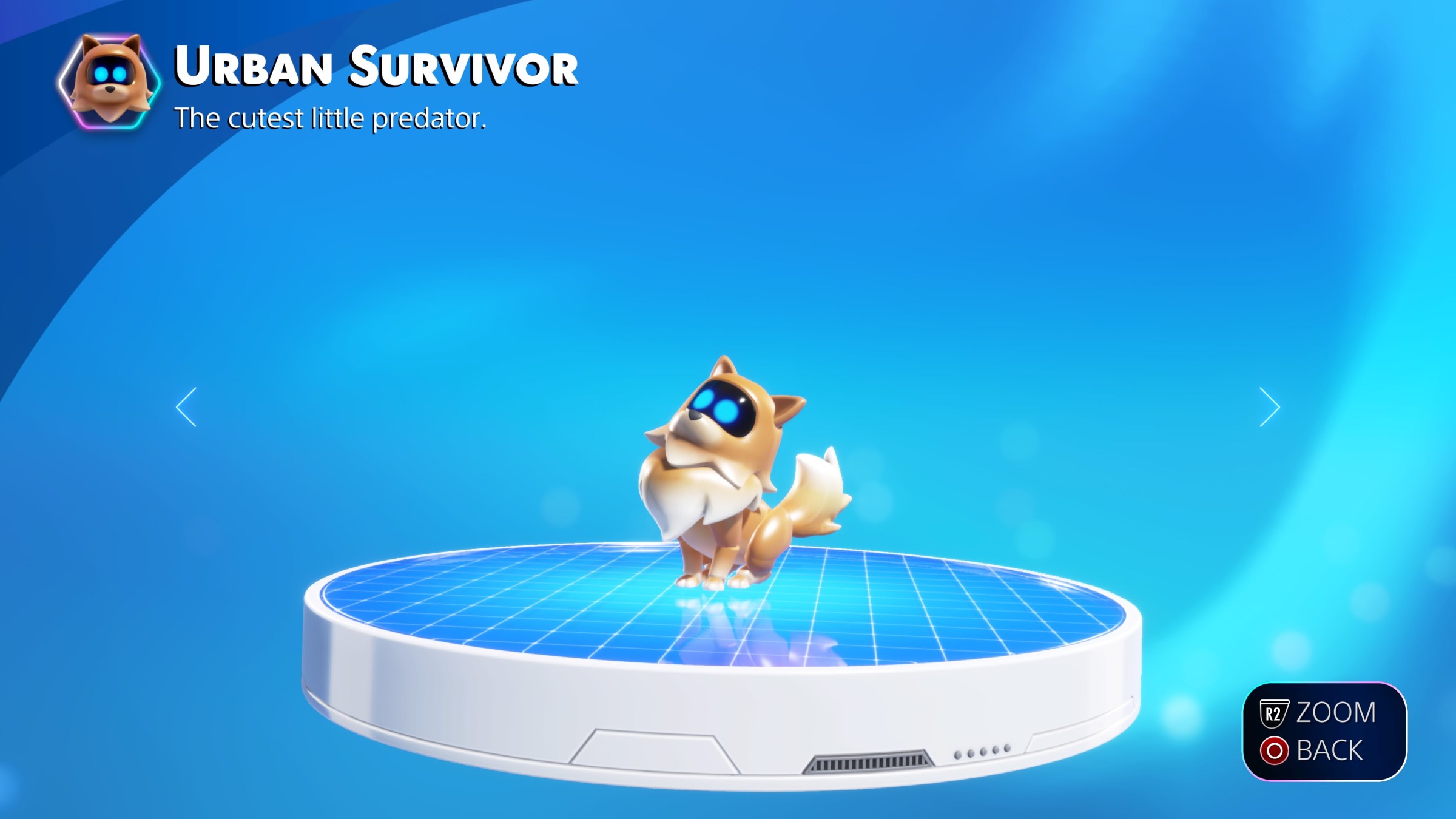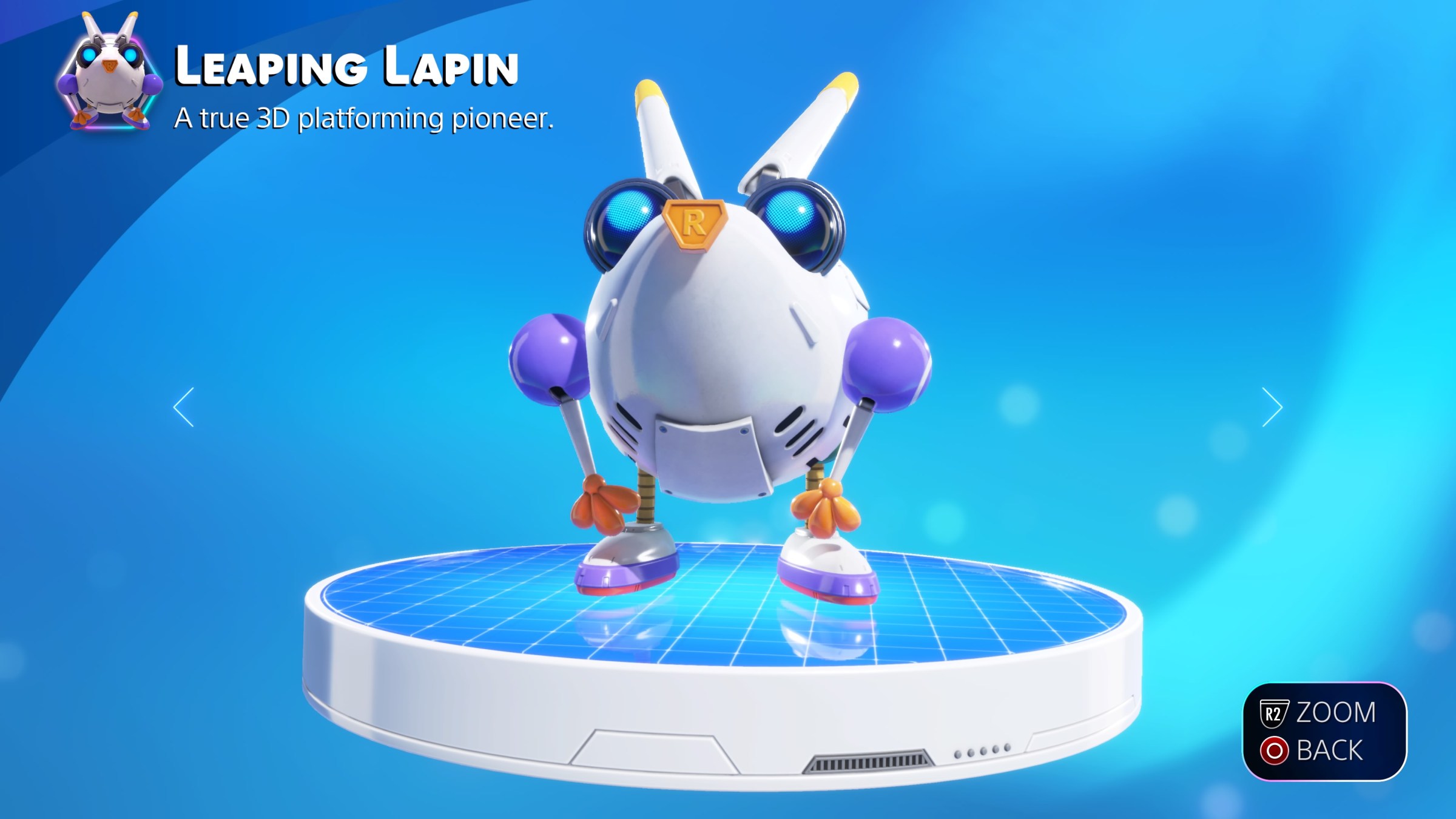The 15 Deepest Cuts in Astro Bot, and Where They Came From
Astro botreleased on PlayStation 5 on September 6, is a great platformer. It also serves as the kick-off for Sony’s celebration of 30 years of PlayStation (The original console debuted in Japan in December 1994.) The game is filled with PlayStation Easter eggs and fan service.
Of the game’s 300 collectible bots, a whopping 173 are dressed as characters from the last three decades of PlayStation games. But developer Team Asobi brazenly doesn’t name them outright, instead giving each one a codename that seems like a clue (“Aristocratic Archaeologist” for Lara Croft, “Raider Dude” for Nathan Drake) and a further hint-filled description. Browsing through the collection, then, is as much a guessing game as it is a test of how deep your PlayStation fandom runs.
Many of the bots are instantly recognizable. But some are pretty obscure. While the heroes from third-party publishers are all pretty famous (Ryu, Ken, Solid Snake), Team Asobi has taken a deep dive into Sony’s history as a game publisher and unearthed some weird and wonderful delights. Particularly during the PlayStation and PlayStation 2 eras, Sony was a publisher with deep pockets and wasn’t afraid to throw all sorts of bizarre ideas at the wall to see what would stick, particularly in the Japanese market.
Astro botThe Bone Collection is a beautiful tribute to that era, and to Team Asobi’s former home, Japan Studio — the legendary, innovative Sony studio that closed in 2021. Here are some of the deepest pieces from the collection.
(Thanks to my Polygon colleagues — especially Nicole Carpenter and Michael McWhertor — for helping identify some of these robots, and to Ryan Gilliam for sharing images of his complete bot collection!)
It is not surprising that many of the deepest cuts in Astro bot come from the PS1 era, but here’s a PlayStation 3 game that has sadly been forgotten for over a decade: the 2013 game Puppeteer. This little guy is Kutaro, a boy turned puppet who, in a new gameplay mechanic, can swap heads and slice the landscape with his scissors. This game from Japan Studio was creative, but failed to find much of an audience – which, in the high-stakes world of the PS3 era, was becoming a problem for Sony. Its failure signaled the beginning of the end for the studio.
This creepy, angular purple head is called Polygon Man and, believe it or not, briefly served as the marketing mascot for the original PlayStation in North America. Polygon Man was intended as an edgy spokesperson aimed at teens who might be put off by the toy-like PlayStation name, but was considered a mistake by almost everyone, including PlayStation head Ken Kutaragi. It was abandoned before the PS1 even launched.
Dark Chroniclethe 2003 PS2 role-playing game from Level-5 that was released as Dark Cloud 2 in North America, is not as obscure as some of the other references on this list, but the way this bot is named and presented makes its identity particularly difficult to guess. It is Dark Chronicle‘s protagonist Maximilian, or Max, and he broods over a number of toy houses as the game has a built-in city-building mechanic, along with the random dungeons it inherits from its spiritual predecessor Dark cloud.
Boku to Natsuyasumi (usually translated as My summer vacation) is a Japanese series of open-ended, nostalgic life sims about life as a child during the summer holidays in 1975. This insect-catching boy is the main character, Boku. In the first game, released on PlayStation in 2000, and its three sequels, there are no real goals; apart from daily routines, it is up to you to decide how Boku spends his 31 days of free time in the countryside. Natsu-Mon: Summer Child of the 20th Centurya spiritual sequel from original director Kaz Ayabe, was recently released for Nintendo Switch and Windows PC.
One of the most unusual games ever released for the PS1 – and that’s saying something – is Vib ribbon. It’s an ultra-minimalist, black-and-white take on the then-popular rhythm game genre, in which a scratchy, animated, line-drawn rabbit named Vibri jumps along a single line and navigates abstract hazards to the beat of upbeat electro music. The twist was that you could insert your own music CDs into the PlayStation and have the game generate levels to match the melodies.
Crazy minigame compilations were a thing on the original PlayStation; does anyone remember Bishi Bashi special? One of the most notable was Unbelievable crisiswhich follows four members of a Japanese working-class family as they try to get home for Grandma’s birthday, despite all sorts of terrifying and unusual events — bank robberies, statues storming into offices, teddy bear kaiju, the whole shebang — without blowing their stress meters. This man is the father, Taneo.
This axe-wielding sheep is Lammy, the heroine of A Pity Lammya rocking spin-off of the better known rap rhythm game PaRappa the Rapper (also seen in Astro bot). While it doesn’t quite have the lyrical charm of PaRappa, A Pity Lammy goes incredibly hard musically, conceptually and in terms of hectic gameplay.
This elfin adventurer is Alundrastar of a 1998 game of the same name for the PS1. Developed by Matrix Software and published in Japan by Sony themselves, it was an attempt to give the PlayStation a Legend of Zelda-style fantasy adventure, with the interesting gimmick that Alundra could enter the dreams of the local townspeople. However, the old-fashioned 2D gameplay was completely overshadowed by Zelda’s move to 3D with Ocarina of Time that same year, and now it is largely forgotten.
This block header is a reference to Intelligent Qubea 1997 Sony PS1 puzzle game in which a small man runs around on platforms, trying not to be crushed by monolithic metal cubes. There is something eerie and oppressive about the fragile little man running around in this hostile, monochromatic void, at the mercy of the basic polygonal plates that could only have been invented in the wild early days of 3D gaming.
This guy is Arc, the hero of the tactical RPG Arc de Jongena Japan-only PS1 release in 1995. The game was popular enough to spawn several sequels, as well as manga and anime, well into the PS2 era. However, the first three games were never published in the West, which more or less condemned it to obscurity in those countries.
Before Sony allowed him to define racing games for a generation with his ultra-realistic motorsport magnum opus Great TourismKazunori Yamauchi was asked to prove his worth by releasing a Mario Kart clone at Japan Studio. That game was from 1994 Motor Toon Grand Prix (released only in Japan, although a sequel was released in the US). Yamauchi clearly over-engineered it, building complex handling physics with fully simulated suspension for the cartoon karts.
You’d be forgiven for being taken aback by this strange glowing dog character, even though it comes from a very recent release. It’s the player character of Humanitya 2023 puzzle-platformer/work of art in which your heavenly dog leads huge crowds of people through treacherous, abstract levels (somewhat reminiscent of Intelligent QubeActually).
This cute little Keeshond is the cover star of a particularly wild indie game from the PS3 era, developed by Crispy’s! and created by Japan Studio: Tokyo JungleThe 2012 game is about survival of the fittest in a devastated Tokyo with no human inhabitants — only animals that eat each other, fuck each other, and evolve. The Keeshond is one of the first two animal species (the other is a deer; surviving as a herbivore is even harder).
Every now and then you come across a game that needs no more explanation than its title, and one such example is the 2002 PS2 release Mr. Mugwhere you… play as a mosquito. You live in a house with a family of life-sized people and have to suck their blood to survive. That’s it. That’s the game.
This is Robbit, the robotic rabbit protagonist from the extremely early PlayStation release Jumping Flash!a game released for console in Europe and North America in 1995. Jumping Flash! was a daring, dizzying attempt at platforming in 3D, from a first-person perspective. Super Mario 64 would consign this approach to history a year later, but the game was still a true pioneer.

